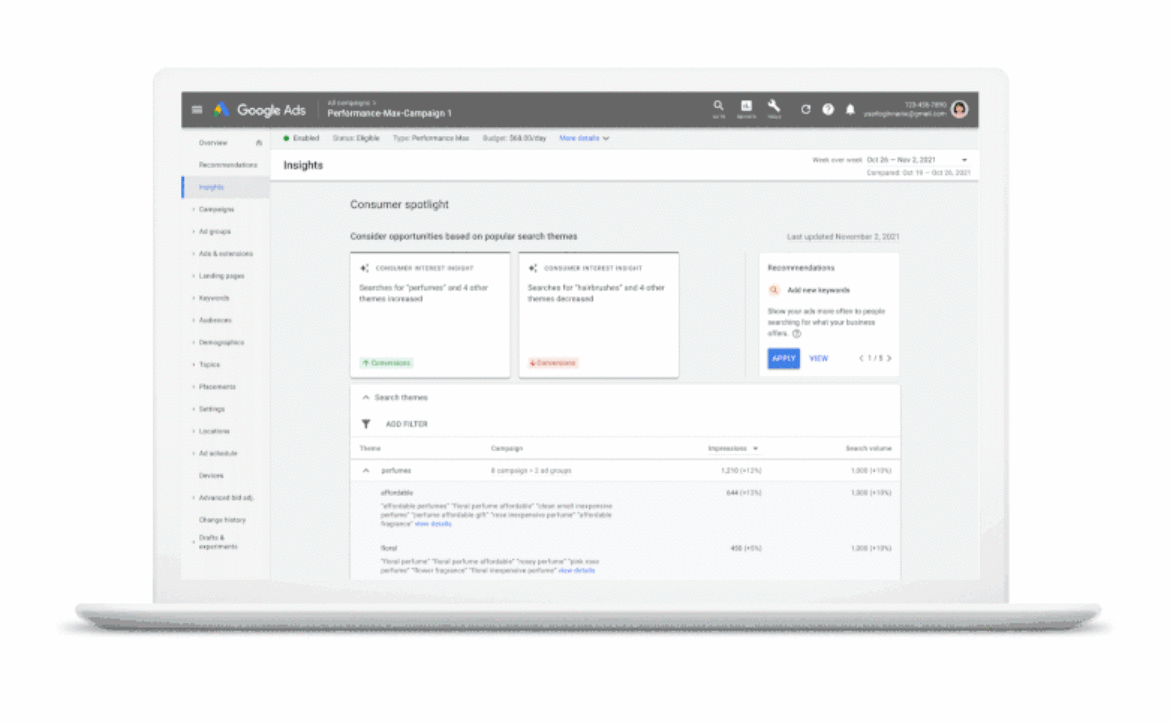Demand forecasts, consumer interest and audience insights are coming to Google Ads’ Insights Page
Four new features — consumer interest insights, audience insights, change history insights and auction insights, and demand forecasts — will be rolling out in beta to the Google Ads Insights page globally in the coming weeks, the company announced Thursday.
Why we care. If the predictions are accurate, demand forecasts can help brands better anticipate emerging trends so that they can plan their inventory and campaigns accordingly. However, user behavior has been unpredictable since the start of the pandemic, so make sure to evaluate demand forecast predictions with your own data before making decisions based on them.
The consumer interest and audience insights enable advertisers to learn more about how customers are searching for their offerings, as well as the themes they’re interested in and the ad copy that most resonates with them.
Zooming out, Google Ads’ product updates and offerings over the last few years have been designed to make advertising easier for SMBs, which may not have the resources to hire a full-time PPC professional or enlist the help of an agency. The Insights page is free and these features are likely to provide actionable information to all advertisers on Google’s platform, but its benefit will be greater for businesses that otherwise may not have had access to these trends.
Consumer interest insights. This feature aggregates and anonymizes the top-performing search query themes that drive performance in your campaigns. It tells you the number of people who searched for each theme, the theme’s growth and how it performed in your account.
Audience insights. This feature is aimed at helping advertisers learn about the interests and affinities of audiences that are seeing their ads, particularly the user groups that Google’s automation has identified as driving strong performance. Additionally, audience insights can enable advertisers to identify what creative resonates with their audience.

Demand forecasts. Instead of focusing on historical performance trends, demand forecasts use machine learning and past seasonal search trends to predict emerging search interests over the next 180 days.

These forecasts are personalized to your account, so advertisers will only see trends based on the categories they advertise in. Data is updated daily and predictions are replaced with real data as it comes in. The forecast may also adjust daily to improve accuracy.
Change history insights and auction insights. This feature can be used to better understand how shifting auction competition or changes you, the advertiser, made in your account affect performance.
The post Demand forecasts, consumer interest and audience insights are coming to Google Ads’ Insights Page appeared first on Search Engine Land.





